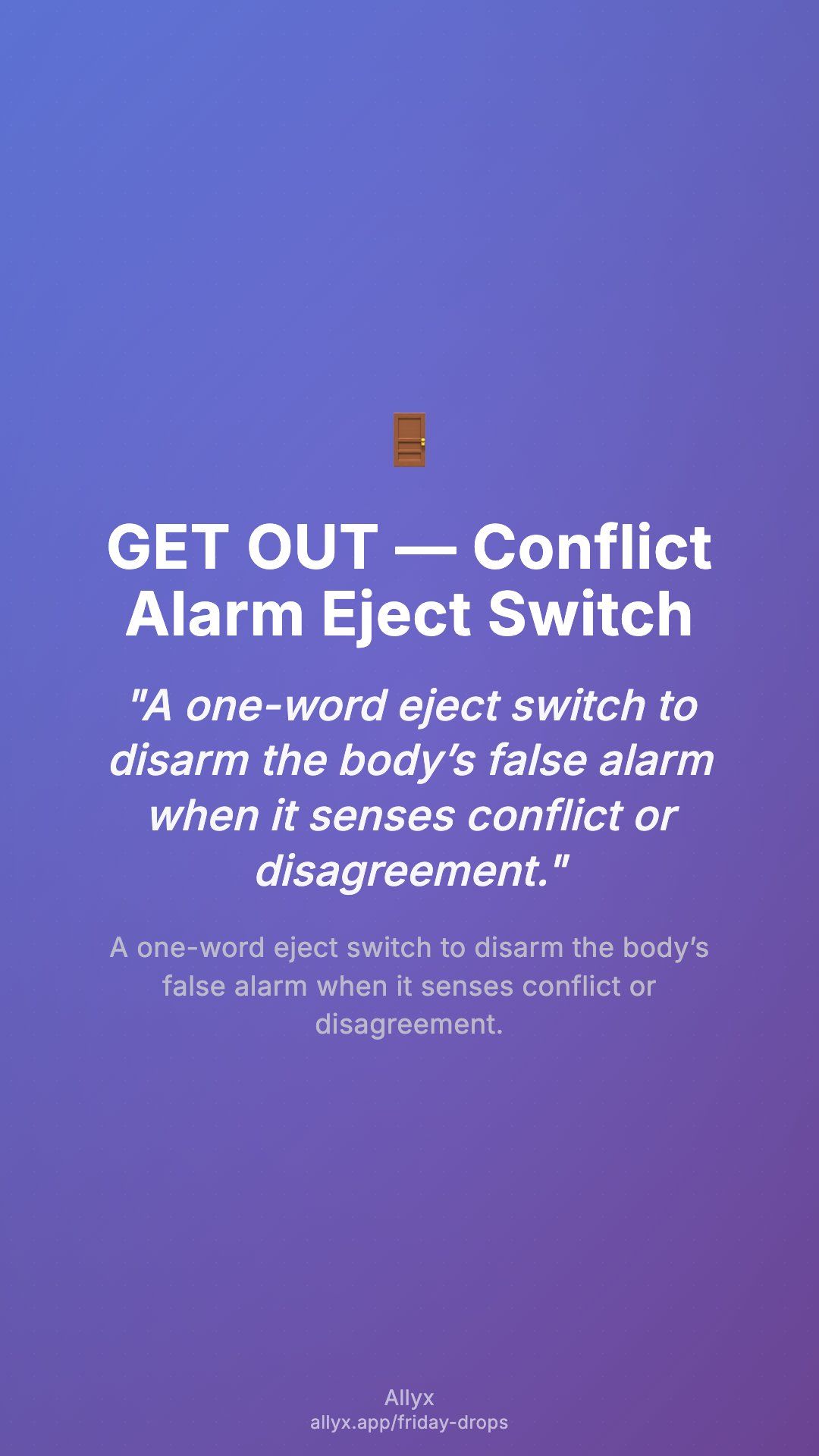GET OUT — Conflict Alarm Eject Switch
A one-word eject switch to disarm the body’s false alarm when it senses conflict or disagreement.
Thursday, September 18, 2025
Metaphorical Narrative
Imagine you’re sitting in a room and a faulty smoke alarm goes off. It blares, flashes, insists that danger is imminent. But you glance around — there’s no smoke, no fire, only noise. Instead of panicking, you stand up, walk over, and press the big red reset button. The room falls silent. Nothing was ever wrong.
That’s what the conflict alarm feels like in the body. A jolt of urgency, a squeeze in the chest, the whisper of “trouble is coming.” But often, it’s just a faulty detector. And the reset button? A single phrase: GET OUT.
Core Insight
The body sometimes confuses disagreement with danger. Subconscious cues — a look, a pause, a tone — can ignite old survival codes, tricking physiology into fight-or-flight. The alarm feels real, but it belongs to ego scripts, not to present reality.
By saying “GET OUT”, you seize control of the switchboard. It’s not a negotiation, not a calming pep talk. It’s a command. The alarm is evicted, and the body drops back into baseline. Executive function takes the wheel, and presence returns in seconds.
Saturday Experiment
Next time a conflict alarm flashes:
- Say out loud (or firmly in your mind): GET OUT.
- Notice the body’s reset — breath softens, chest loosens, normal returns.
- If you want extra grounding, take one slow inhale and exhale to anchor the calm.
Tag it in your Tracker if you like: Conflict Alarm → Ejected.
Sunday Reflection
When “I” pressed the eject switch, how did the body respond?
What proof appeared that the alarm was false?
How does it feel to know the reset button is always available?

